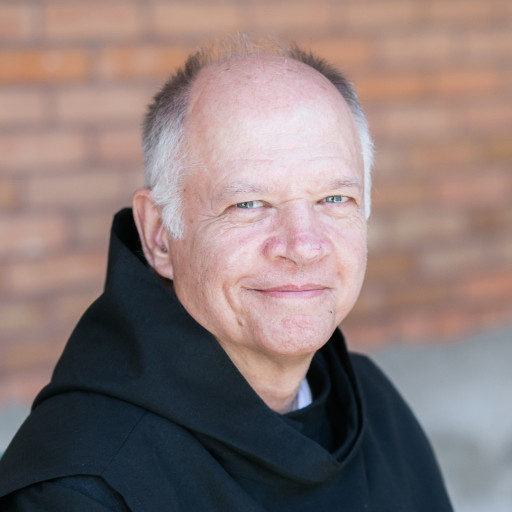

Llewellyn Kouba
August 30, 1950 — March 22, 2020
Llewellyn Kouba
A private Mass of Christian Burial was celebrated at Assumption Abbey, followed by burial in the Abbey cemetery.
Brother Llewellyn Kouba, monk of Assumption Abbey, died suddenly in the early morning hours of March 22, 2020. He passed away from natural causes unrelated to the COVID-19 virus. He was sixty-nine years old.
Llewellyn was born to Charles H. Kouba and Helen (Jesch) Kouba on August 30, 1950, the second of seven children. He grew up on a farm near Regent, ND. The family milked cows by hand and bought the very first freezer they owned with a cream check. They also raised polled Herefords but eventually sold the livestock and put all their efforts into grain farming. Llewellyn raised exotic pheasants and pea fowl and became a master gardener, especially with flowers, learning the Latin names of hundreds of varieties of plants. Llewellyn created an elaborate rock garden on the farm with a water fountain, water lilies and goldfish.
After graduating from Regent Public High School in 1970, he briefly attended the Minneapolis Institute of Art. He returned home and worked for Blue Star Honey Company in New England, ND, and Korte Interiors in Dickinson, ND, before entering Assumption Abbey in January of 1977. After his candidacy and novitiate he pronounced monastic vows on July 11, 1978. He soon became grounds manager, using a push mower to cut acres of lawn. He also kept immaculate flowerbeds. In winter months he was part of the maintenance crew.
In 1988 Brother Llewellyn was assigned to the Abbey Pottery Studio, and in 1994 he was sent to the College of St. Benedict and St. John’s University to study pottery for a year under Sister Dennis Frandrup, OSB. He returned home to take over the Abbey Pottery Studio creating lovely pieces and keeping meticulous records in his recipe book of glazes, along with drawers of glaze specimens. His trademarks were ceramic leaves on pots, and iris flower motifs that were embossed on the pottery.
All the while, Brother Llewellyn continued painting. Many of his pictures adorn the walls of the Abbey. After taking a workshop in the Black Hills on icon painting, he began a large, altar-sized triptych that took him two years of steady work to complete. The work required egg tempera on specially prepared board and contains a good deal of gold leaf. The triptych is displayed on the east wall of the Abbey cafeteria.
In the 1990s, when rug hookers began coming to the Abbey for workshops, Llewellyn became enthusiastic and set out to create a large, elaborate rug which required the hand-dying of wool, then cutting it and weaving it into Scottish burlap in a design of his own making. He entitled the piece “Blue India” because of the fabulous blue India peacock at the center of the rug.
The Dickinson Press and The Bismarck Tribune did many articles on Brother Llewellyn’s pottery, icon painting and rug weaving over the years. He had a beaming smile and was an easy subject for interview. Llewellyn made friends easily and knew people far and wide.
Health problems plagued him in later years, forcing him to keep smaller flowerbeds until he concentrated his efforts near the Abbey Pottery Studio where he laid a path of ceramic tiles that were designed and fired in the kiln, and kept a large running fountain during the summer months, also fired in the kiln.
Brother Llewellyn was preceded in death by his parents, and survived by his four brothers and two sisters: Chuck (Debbie), Bruce (Janice), Ken (Linda), Brian, Paulette (Gary) Peters, and Lunette (Reed) Dobitz, and many nephews, nieces, grand-nephews and grand nieces.
Brother Llewellyn Kouba, monk of Assumption Abbey, died suddenly in the early morning hours of March 22, 2020. He passed away from natural causes unrelated to the COVID-19 virus. He was sixty-nine years old.
Llewellyn was born to Charles H. Kouba and Helen (Jesch) Kouba on August 30, 1950, the second of seven children. He grew up on a farm near Regent, ND. The family milked cows by hand and bought the very first freezer they owned with a cream check. They also raised polled Herefords but eventually sold the livestock and put all their efforts into grain farming. Llewellyn raised exotic pheasants and pea fowl and became a master gardener, especially with flowers, learning the Latin names of hundreds of varieties of plants. Llewellyn created an elaborate rock garden on the farm with a water fountain, water lilies and goldfish.
After graduating from Regent Public High School in 1970, he briefly attended the Minneapolis Institute of Art. He returned home and worked for Blue Star Honey Company in New England, ND, and Korte Interiors in Dickinson, ND, before entering Assumption Abbey in January of 1977. After his candidacy and novitiate he pronounced monastic vows on July 11, 1978. He soon became grounds manager, using a push mower to cut acres of lawn. He also kept immaculate flowerbeds. In winter months he was part of the maintenance crew.
In 1988 Brother Llewellyn was assigned to the Abbey Pottery Studio, and in 1994 he was sent to the College of St. Benedict and St. John’s University to study pottery for a year under Sister Dennis Frandrup, OSB. He returned home to take over the Abbey Pottery Studio creating lovely pieces and keeping meticulous records in his recipe book of glazes, along with drawers of glaze specimens. His trademarks were ceramic leaves on pots, and iris flower motifs that were embossed on the pottery.
All the while, Brother Llewellyn continued painting. Many of his pictures adorn the walls of the Abbey. After taking a workshop in the Black Hills on icon painting, he began a large, altar-sized triptych that took him two years of steady work to complete. The work required egg tempera on specially prepared board and contains a good deal of gold leaf. The triptych is displayed on the east wall of the Abbey cafeteria.
In the 1990s, when rug hookers began coming to the Abbey for workshops, Llewellyn became enthusiastic and set out to create a large, elaborate rug which required the hand-dying of wool, then cutting it and weaving it into Scottish burlap in a design of his own making. He entitled the piece “Blue India” because of the fabulous blue India peacock at the center of the rug.
The Dickinson Press and The Bismarck Tribune did many articles on Brother Llewellyn’s pottery, icon painting and rug weaving over the years. He had a beaming smile and was an easy subject for interview. Llewellyn made friends easily and knew people far and wide.
Health problems plagued him in later years, forcing him to keep smaller flowerbeds until he concentrated his efforts near the Abbey Pottery Studio where he laid a path of ceramic tiles that were designed and fired in the kiln, and kept a large running fountain during the summer months, also fired in the kiln.
Brother Llewellyn was preceded in death by his parents, and survived by his four brothers and two sisters: Chuck (Debbie), Bruce (Janice), Ken (Linda), Brian, Paulette (Gary) Peters, and Lunette (Reed) Dobitz, and many nephews, nieces, grand-nephews and grand nieces.
To order memorial trees or send flowers to the family in memory of Llewellyn Kouba, please visit our flower store.
Guestbook
Visits: 41
This site is protected by reCAPTCHA and the
Google Privacy Policy and Terms of Service apply.
Service map data © OpenStreetMap contributors





